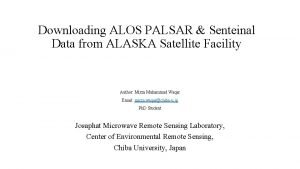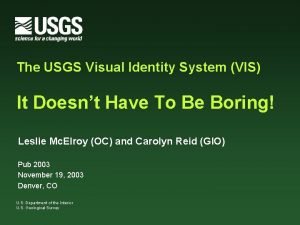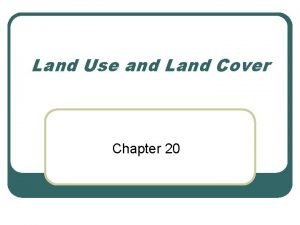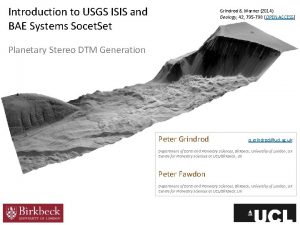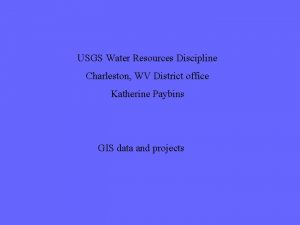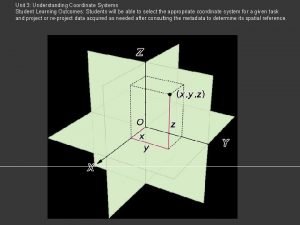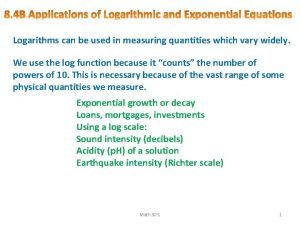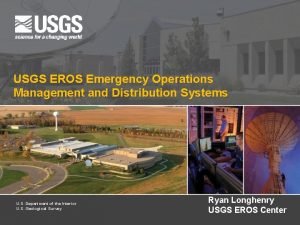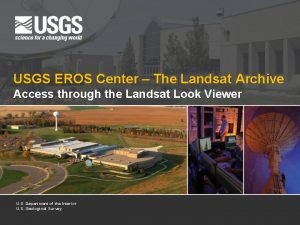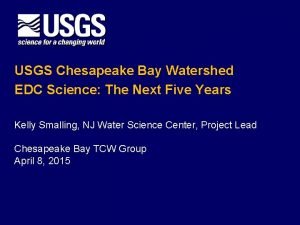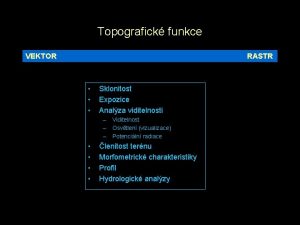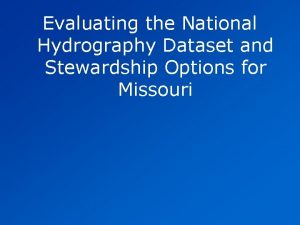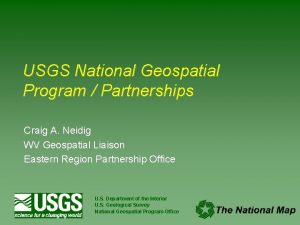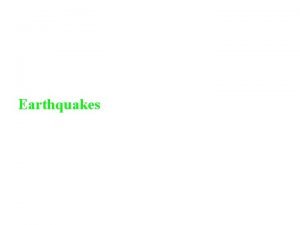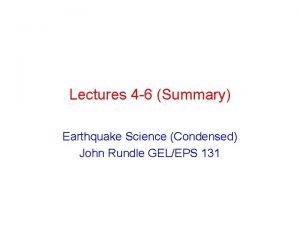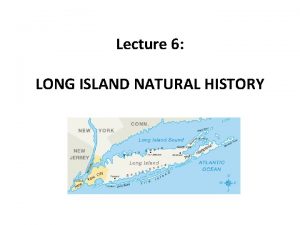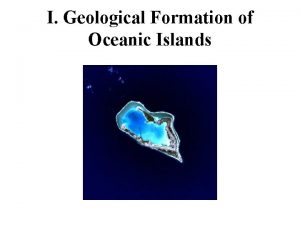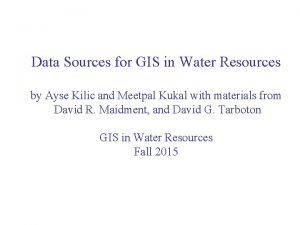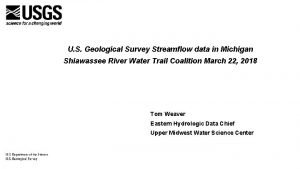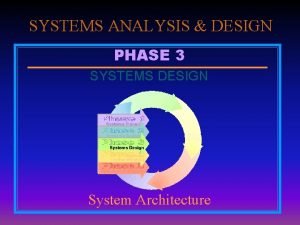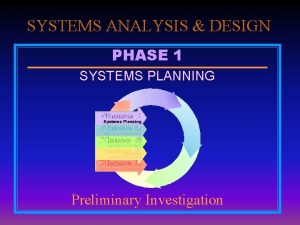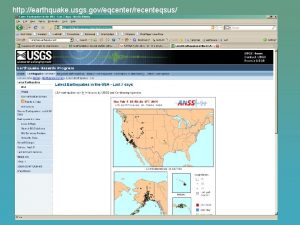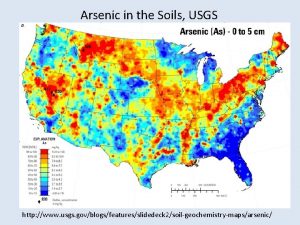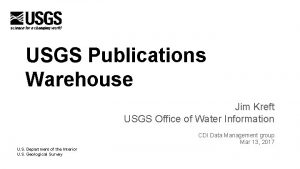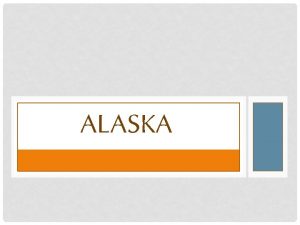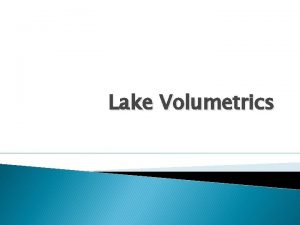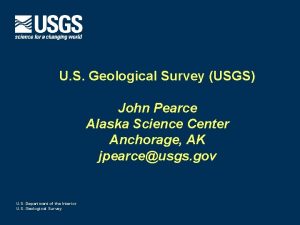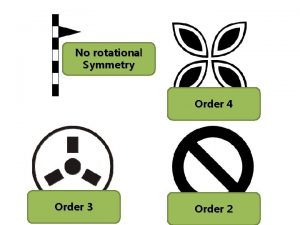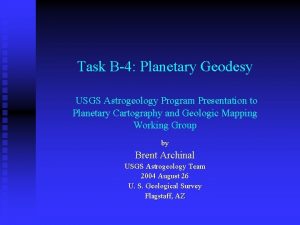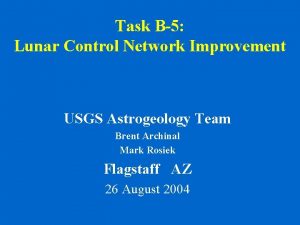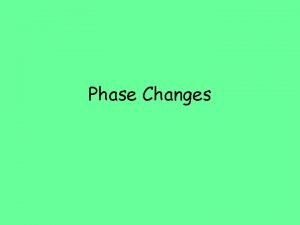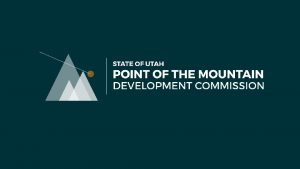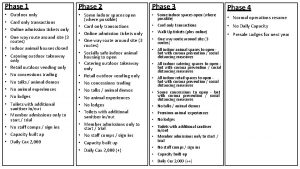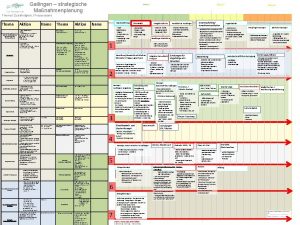USGS Task Order Alaska DEM Phase II Alaska






























- Slides: 30

USGS Task Order, Alaska DEM – Phase II Alaska DEM Funding and Implementation Plan David F. Maune, Ph. D. , PSM, PS, GS, CP, CFM Dewberry 8401 Arlington Blvd. Fairfax, VA 22031 Tel: (703) 849 -0396 Email: dmaune@dewberry. com

Alaska DEM Whitepaper (Phase I) • Identified statewide requirements and alternative solutions for obtaining accurate and current digital elevation data for Alaska. • Obtained strong concurrence from NDEP and NDOP in August.

2 nd Edition, 2007 1. Introduction to DEMs, 3 -D Surface Modeling, Tides 2. Vertical Datums 3. Accuracy Standards 4. National Elevation Dataset 5. Photogrammetry 6. IFSAR 7. Topographic & Terrestrial Lidar 8. Airborne Lidar Bathymetry 9. Sonar 10. Enabling Technologies 11. DEM User Applications 12. DEM Quality Assessment 13. DEM User Requirements 14. Lidar Processing & Software 15. Sample Elevation Datasets

Why Alaska is Different and Changing Ships can now transit N. Atlantic ↔ N. Pacific around N. Slope § Largest area § 10 UTM zones § Longest distances § Tallest mountains § Longest shoreline § Fewest roads § Most reliance on airfields § Most impact from climate and sea level changes § Post-glacial rebound = changing elevations & changing gravity § America’s worst geodetic & geospatial infrastructure § Quad maps, NED, orthos not to National Map Accuracy Standards § Maps largely neglected for 50 years since statehood, even with vital natural resources

Alaska compared with other States • Smaller scale (1: 63, 360) topographic quads in Alaska, and many do not satisfy National Map Accuracy Standards (NMAS) • National Elevation Dataset (NED) has huge errors: – Horizontal errors: several miles in some places (errors are 100 times larger than per NMAS) – Vertical errors: hundreds of meters too low • Few roads; rely on air transportation; even the state capitol, Juneau, is not accessible by road. • Aeronautical charts, DEMs and e. TOD data are critical to all aviators, including DOD and DHS statewide. • Cannot accurately orthorectify images using the NED

Quotes from experienced pilot who lost many pilot friends in Alaska aviation accidents • “On the track from Fairbanks to Kobuk, there is a mountain that is 3, 000 feet higher than in the sectional aeronautical map … absolutely certain it is more than two miles displaced. It was very impressive, if flying IFR and trusting the map we would have flown right into it. ” • “You’ll find most mountains 300 feet too small. ” • “Wolverine Mountain and Angutikada Peak are ‘way off’ in the sectionals. ” • Appendix B in whitepaper provides many other examples.

Alaska orthorectification problems • Normally images can be draped over a DEM from the NED for orthorectification • Won’t work in Alaska when NED errors are: – 100’s of meters vertical – 1, 000’s of meters horizontal • Need to first correct Alaska NED …

… to avoid this kind of problem (Western Alaska) Kevin Engle – UAF GINA: http: //www. gina. alaska. edu

User Group 1: Aviation Safety Interviewed Steve Colligan Lars Gleitsmann Nick Mastrodicasa George Sempeles (FAA) Mid-accuracy (20 -ft) equivalent contour accuracy is required for Alaska Area 2 IFR sites • • Alaska Applications/Benefits • FAA compliant Electronic Terrain and Obstacle Database (e. TOD) required for navigation in Alaska during extensive periods of limited visibility where Instrument Flight Rules (IFR) are used. • 20 - ft contour accuracy DSMs and DTMs needed for Aviation Safety in Area 2 terminal control areas for airfields throughout Alaska • 200 -ft contour accuracy (or better) DSMs and DTMs statewide for Area 1 requirements • Terrain avoidance; mountain passes, float plane needs are unique for Alaska

Alaska satisfies neither Area 1 nor Area 2

VFR Terminal Area Chart showing red circle within which DEM w/20 -ft contour accuracy would be required when landing under IFR conditions at the Wasilla Airport

What is the e. TOD? The Electronic Terrain and Obstacle Database (e. TOD) is an internationally agree-on standard to provide a safe terrain database for safe flying and navigation under Instrument Meteorological Conditions (IMC) when pilots cannot see the terrain at all due to night and clouds or other weather such as heavy rain and snowfall. When Visual Flight Rules (VFR) cannot be safely followed, and especially during emergency air evacuations at remote villages, aviators then operate under Instrument Flight Rules (IFR) designed to keep aircraft from unintentionally flying into obstacles due to navigation errors. The need for elevation data to create a reliable and compliant FAA e. TOD for navigation in Alaska, during periods of limited visibility, has never been greater. IMC flying conditions have to be coped with in Alaska on a regular basis for airfields throughout the state, even for airfields that are not part of the FAA’s 148 IFR sites. Accurate DEMs are vital for flight planning, terrain avoidance, transiting through mountain passes, and landing of float planes on rivers and other water bodies. DEMs are also used for pilot training and simulators.

Terrain data for e. TOD Note: Obstacles require “boots on the ground” surveys

Table 2. ICAO DEM Requirements In addition to SRTM (south of 60° north latitude) entire world may satisfy this Area 1 requirement when ASTER GDEM data is available But what about Area 2 requirements in 2010?

1, 004 combined IFR and emergency sites Dirt road What happens when you dial E-911 in Alaska?

Fatal (red) & non-fatal accidents (2001 -2005)

Vertical Accuracy Requirements

Vertical Accuracy of Airborne IFSAR Options

Vertical Accuracy of Satellite Options ASTER GDEM now being evaluated but won’t satisfy 20 -ft CI need

Strengths/Weaknesses of Optical Imagery • Neither day/night nor all-weather • Photogrammetry produces both orthophotos and DEMs – DSMs produced by automated image correlation – DTMs produced by manual compilation, more expensive • Difficult to accurately maps glaciers and mountains with perpetual snow cover. • Airborne imagery: With good base/height ratio, DTM vertical accuracy comparable to 1 -ft to 20 -ft contours, but expensive • Satellite imagery: Most options are DSMs only and not DTMs. Vertical accuracy comparable to 50 -ft contours (very expensive, with lots of GCPs) to 200 -ft contours (less expensive, w/o GCPs).

Strengths/Weaknesses of Li. DAR Day/night, but not all-weather; must be cloud free Single laser pulses penetrate through or between trees Most accurate option for DTMs in dense forests and vegetation Most accurate elevation differences between DSM and DTM forestry applications. • Ideal for 1 -ft to 2 -ft contour accuracy requirements • Can accurately map mountains with perpetual snow cover; tested in Greenland • Impractical and unaffordable statewide, but NASA’s EAARL may fly Alaska’s major shorelines to satisfy topo/bathy needs. • •

Strengths/Weaknesses of IFSAR • Both day/night and all-weather • Flies at 35, 000 to 40, 000 feet AGL, perfect for GRAV-D • Ortho-rectified radar images (ORI), plus DSMs and DTM, ideal for 10 -ft to 20 -ft contour accuracy • Intermap produces DTMs by editing of DSM; Fugro Earth. Data produces DTMs from P-band IFSAR • Intermap may have licensing issues; no Fugro issues • Significantly less expensive than either airborne Li. DAR or airborne imagery solutions • Radarsat-2 has the least expensive option, but the DSM combined accuracy is equivalent to 83 -ft contours • Maps glaciers and mountains with perpetual snow cover

Airborne IFSAR Considerations In addition to satisfying all statewide requirements, because their aircraft fly at altitudes between 35, 000 and 40, 000 feet, IFSAR aircraft could potentially be fitted to accommodate the National Geodetic Survey’s GRAV-D sensor and operator in order to simultaneously collect gravity data for improving the geoid height model so desperately needed in Alaska. • Intermap Technologies appears to have a competitive advantage by having more flexibility with a larger fleet of aircraft, and it has proven experience for large, successful projects in production of NEXTMap USA, NEXTMap Britain, and NEXTMap Europe. • Fugro Earth. Data appears to have a competitive advantage because of Geo. SAR’s X-band P-band sensors that may be superior for accurate mapping of both the DSM and DTM in forested regions, and images the terrain with about 4 x redundancy from multiple look directions to minimize shadow & layover.

Airborne IFSAR Conclusion An IFSAR hybrid IFSAR solution should be considered in order to benefit from the advantages of both Intermap and Fugro Earth. Data. Discriminating factors should include: § Comparative costs, including licensing § Technical advantages of X-band P-band for different areas § Plans to minimize and mitigate artifacts from layover/shadow § Past performance (satisfied clients? ) § Whether or not the IFSAR aircraft could simultaneously accommodate a NGS gravimeter and operator in order to also support the GRAV-D program by collecting gravity data along the same flight lines as the IFSAR data collection.

http: //www. dnr. state. ak. us/kodiak/gis/raster/map_library/y 1994/lris/akpie_61. pdf

Alaska Upland Land Ownership/Management (Statewide total ≈ 1. 8 million Km 2) Whose problem is it? All of us; we need funding partners Met with NDOP and NDEP in August An additional 65 million acres of Tide and Submerged Lands are mapped for offshore drilling activities and sea ice monitoring.

Consensus points (agree or disagree? ) We have no time to waste • ICAO Area 1 Requirements: 11/20/2008 • ICAO Area 2 Requirements: 11/20/2010 • Other statewide user requirements: Immediate • Alaska’s mapping needs have been neglected for 50 years; unmet needs in Alaska are dire, especially aviation safety We must remain true to Alaska’s • 20’ requirements contour accuracy or better • Both DSM and DTM, especially mountain peaks, ridgelines and hydrology • Technology that overcomes adverse weather conditions • Technology that maps snow-capped mountains & glaciers • Technology that is cost-effective We must find timely, cost-effective solution • Only airborne mapping options can satisfy AK’s technical and accuracy requirements • Airborne IFSAR costs are significantly less than airborne Li. DAR or photogrammetry • Multiple contracting options are available to obtain the most cost-effective solution for timely delivery of quality products • Need both federal and state funding

Agree or disagree on other points? We have time to reach consensus elsewhere • Data acquisition and post-processing can proceed if we choose ellipsoid heights and Alaska Albers, for example, knowing that NED will be provided as geographic coordinates in ESRI grid format • Other issues can be resolved while data are being acquired and processed What other requirements should be satisfied? How? By whom? We must find costeffective solution • Will GINA serve multiple datasets to the public? • Will GINA provide orthometric heights that change with new geoid models? • Will GINA provide Geo. Tiff and/or other file formats • Who will perform hydroenforcement of DTM? How? Who pays? • Who will filter DTM so roads are smooth on orthophotos? How? Who pays? • Answers to these questions may depend on available funds and contract costs for data acquisition & processing • If available funds are inadequate to pay for everything as part of major contract, get data acquired and DSM/DTM delivered ASAP; then determine if those responsible for land management pay for hydro-enforcement, etc. if needed for their areas of responsibility.

USGS Task Order: Alaska DEM Initiative – Phase II Alaska DEM Funding & Implementation Plan • Executive Summary • Agency Executive Leadership Communications, incl. DOI (USGS, BLM, NPS, F&WS, BIA); DOD (NGA); DHS; NGS; FAA; USDA (USFS, NRCS, FSA); State of Alaska • Initiative Plan, incl. FGDC coordination and Agency Executive Leadership coordination • Brief 2/27/09 at Alaska Mapping Conference Need Funding Partners to solve a common need

Alaska DEM, “shovel-ready”
 Alaska satellite facility dem
Alaska satellite facility dem 1st order 2nd order 3rd order neurons
1st order 2nd order 3rd order neurons Tiered task bias task
Tiered task bias task Usgs core research center
Usgs core research center Vis visual identity system
Vis visual identity system Usgs land use classification
Usgs land use classification Usgs isis
Usgs isis Usgs streamflow wv
Usgs streamflow wv Usgs sentinel 2
Usgs sentinel 2 Usgs map projections poster
Usgs map projections poster Http://earthquake.usgs.gov/earthquakes/map/
Http://earthquake.usgs.gov/earthquakes/map/ Water data warehouse
Water data warehouse Http://earthexplorer.usgs.gov/
Http://earthexplorer.usgs.gov/ Landsatlook
Landsatlook Usgs chesapeake bay
Usgs chesapeake bay Webgis adalah
Webgis adalah Usgs national hydrography dataset
Usgs national hydrography dataset Usgs
Usgs Usgs
Usgs Usgs.gov
Usgs.gov Usgs.gov
Usgs.gov Hawaii 5-0
Hawaii 5-0 Gtopo
Gtopo Information about water
Information about water Usgs streamflow michigan
Usgs streamflow michigan Quicktime usgs
Quicktime usgs This is the final task in phase 3: systems design
This is the final task in phase 3: systems design Phase 3 design
Phase 3 design This is the final task in phase 3: systems design.
This is the final task in phase 3: systems design. This is the final task in phase 3 systems design
This is the final task in phase 3 systems design Normal phase vs reverse phase chromatography
Normal phase vs reverse phase chromatography
